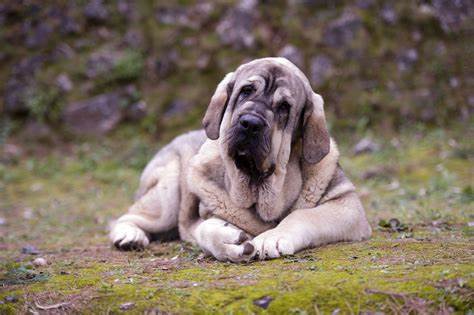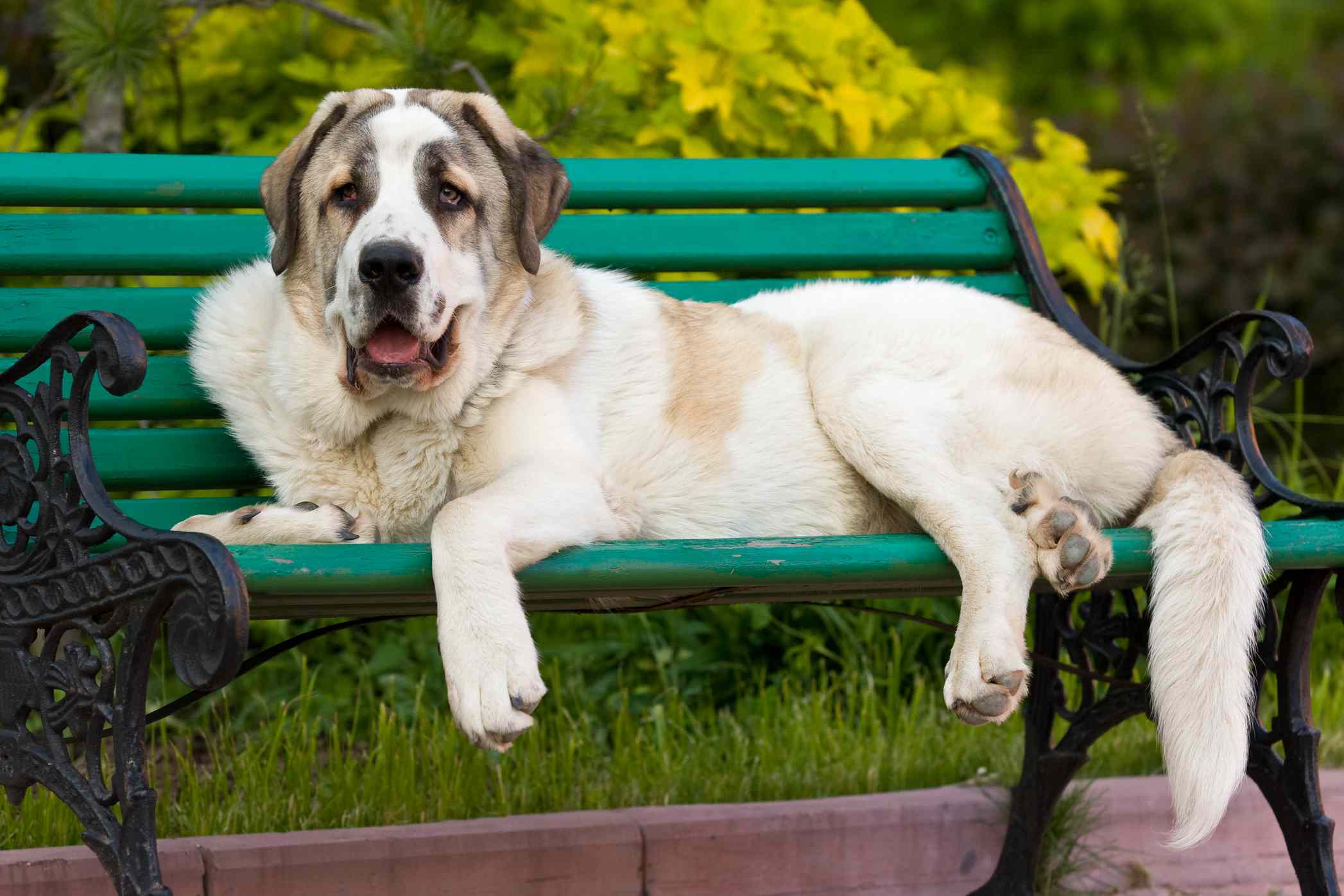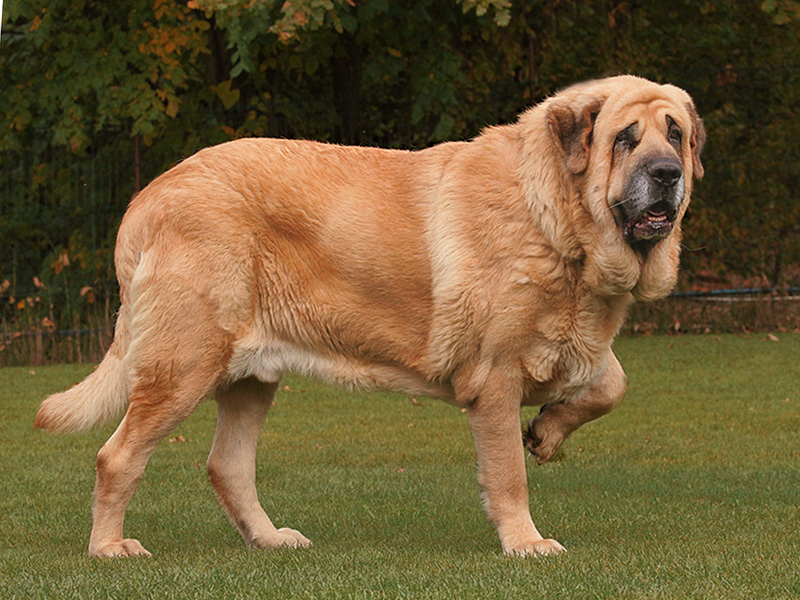
The Spanish Mastiff (Mastín Español) is an ancient livestock guardian dog, believed to have been introduced to the Iberian Peninsula thousands of years ago by nomadic tribes. It evolved primarily in Spain’s rugged regions, especially León, Castile, and Extremadura, where it guarded flocks of Merino sheep from predators like wolves and bears.
During the Middle Ages, Spanish Mastiffs played a crucial role in transhumance — the seasonal migration of livestock between summer and winter pastures. Their size, strength, and courage made them indispensable protectors. The breed has been formally recognized and carefully preserved in Spain, where it is still used as a working guardian.
While less common outside its homeland, the Spanish Mastiff is highly respected among livestock farmers and working dog enthusiasts in Spain and parts of Europe. Internationally, the breed has gained interest as a devoted family guardian and farm protector.
Its calm temperament, protective instincts, and majestic appearance continue to attract owners who appreciate large, loyal guardian breeds.
The Spanish Mastiff is a massive, powerful dog with a rustic and imposing presence.
• Height: 28–35 inches (71–88 cm)
• Weight: 140–220 pounds (64–100 kg)
• Build: Large, muscular, and robust with heavy bone
• Coat: Dense, thick, and moderately coarse double coat
• Color: Fawn, brindle, black, wolf-gray, or red; white markings occasionally present
• Head: Large, broad, and powerful with pronounced stop
• Eyes: Small, almond-shaped, and dark
• Ears: Medium-sized, triangular, and hanging close to the head
• Tail: Thick and long, carried low with a slight curve
Its sheer size and calm demeanor make an immediate impression of strength and dignity.
Spanish Mastiffs are calm, steady, and highly protective of their family and territory.
• Loyal: Deeply bonded to their flock or family; highly devoted and gentle with loved ones.
• Protective: Natural guardian instincts; watchful but not aggressive without cause.
• Calm: Typically quiet, steady, and relaxed when not provoked.
• Independent: Can make decisions on its own in the field, requiring confident leadership.
• Gentle: Affectionate and patient with children and familiar animals.
Though aloof with strangers, they are rarely unnecessarily aggressive and have a stable, balanced temperament.

The Spanish Mastiff is ideal for:
• Farms, ranches, or rural properties needing a flock or property guardian
• Families seeking a loyal, protective, and calm large companion
• Experienced owners familiar with independent guardian breeds
• Those with secure space and a love for majestic, gentle giants
However, it may not be ideal for:
• Apartment living or homes without secure, spacious outdoor areas
• First-time dog owners unaccustomed to independent or giant breeds
• Homes unable to manage the feeding and care needs of an extra-large dog
These gentle giants thrive with space, routine, and clear leadership.
• Exercise: Moderate; long, daily walks and secure outdoor access are sufficient
• Training: Early, consistent, and positive reinforcement; socialization is key
• Grooming: Moderate; weekly brushing and heavier grooming during seasonal shedding
• Living Environment: Best suited to rural or suburban homes with fenced yards or farms
• Feeding: High-quality, large-breed diet designed to support joint health and slow growth in puppies
Monitoring their joints and weight is crucial to avoid stress on their large frame.
The Spanish Mastiff is generally hardy but may be prone to:
• Hip and elbow dysplasia
• Bloat (gastric torsion)
• Osteosarcoma (bone cancer, less common but possible)
• Entropion (eyelid disorder)
Lifespan averages 10 to 12 years, which is impressive for a giant breed. Responsible breeding and weight management are key to longevity.

• Great Pyrenees: Similar guardian role; the Pyrenees is fluffier and often more active.
• Anatolian Shepherd: Lighter and more agile; both are excellent independent livestock guardians.
• Tibetan Mastiff: More aloof and dramatic in coat; the Spanish Mastiff is calmer and steadier.
If you desire a loyal, majestic, and calm guardian for your home, farm, or livestock, the Spanish Mastiff is an excellent choice. They thrive with owners who understand guardian instincts and can provide structure, space, and leadership.
Prospective owners should be prepared for the demands of a giant breed, including feeding, grooming, and training to ensure a well-adjusted companion.
Reputable breeders focusing on health testing, especially for hips and joints, are essential. Spanish Mastiff rescue groups and livestock guardian organizations may also assist with adoptions.
United Pet Club offers microchip registration, large-breed care resources, and health monitoring support for giant breeds like the Spanish Mastiff.